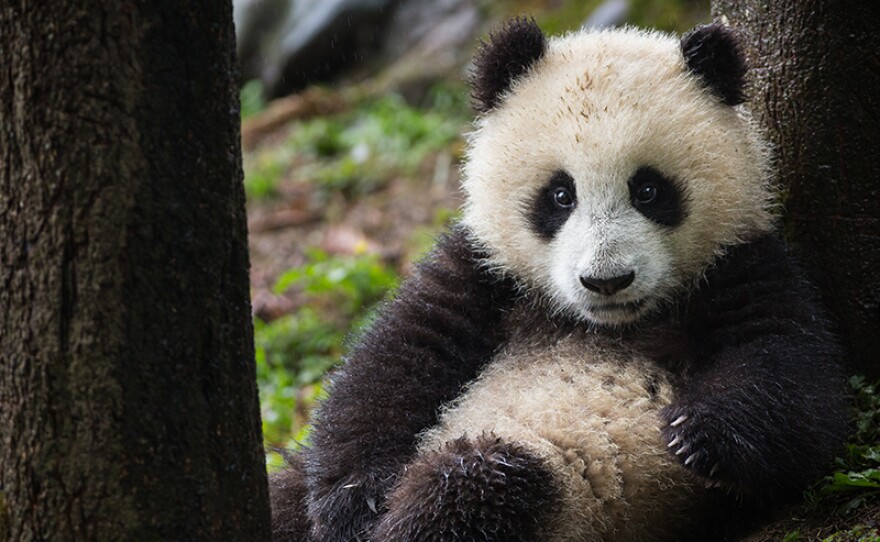Sunday, March 6, 2022 at 8 p.m. on KPBS 2 + watch now with the PBS Video App
From the mighty grizzly bear to the endearing spectacled bear (the real-life “Paddington Bear") and from the bamboo-eating panda to the bizarre-looking sloth bear, this remarkable animal family has long captured the human imagination.
Among the biggest land mammals on the planet, bears need a lot of resources to survive and must use all of their skills, brawn and brains to get what they need – whether they’re foraging for honeycombs or tasty plants, standing up to their rivals or raising cubs.
Follow the adventures of bears across the globe as they draw on their remarkable adaptations to survive in an ever-changing world. Find out what it really takes to be a bear.

Featured Creatures:
- Grizzly Bear
- Spectacled Bear
- Polar Bear
- Giant Panda Bear
- American Black Bear
- Asiatic Black Bear
- Sun Bear
- Sloth Bear
Noteworthy Facts:
- Polar bears can pick up the scent of a seal from 20 miles away and underneath 3 feet of ice.
- To find a mate, bears rub up and down trees to leave an attractive scent. It doesn’t take long for other bears to find the scent and reciprocate; this way of communication lets the bears know who’s around and who’s available for mating.
- The Giant Panda has adapted its body and behavior to be able to almost exclusively eat bamboo. To prevent injury from the bamboo’s splinters, the panda’s esophagus and stomach are lined with tough, thick walls. Since bamboo is low in calories, the panda spends 14 hours a day chewing through 26 pounds or more of bamboo.
- In the summer, Grizzly bears time their hunting of crustaceans during the period of low tides on the exposed sand. Grizzlies can dig up to 100 clams in one low tide, and they also gather seaweed, barnacles, and mussels.
- In autumn, the Grizzly, Asiatic, and American Black bears enter a phase of excessive eating called hyperphagia, when they consume up to 100,000 calories a day. The excessive eating helps the bears during hibernation, when they don’t eat or drink for seven months and rely on their fat reserves to stay alive.
Buzzworthy Moments:
- A male Polar bear treks to find a female Polar to mate, but his long journey doesn’t promise romance at first. The female Polar bear has to be impressed; she will only mate with him if he is fit and strong. She puts him to test to prove his worth by racing down the snow-filled terrain and climbing up a mountain.
- Food is hard to come by in India’s dry grassland, so the Sloth bear must go through unusual circumstances to obtain some. At night, the Sloth bear targets a termite mound. To get inside, the bear uses its three-inch claws to tear into the mound, and its floppy lips and lack of front teeth allow its mouth to act like a vacuum cleaner, sucking up 100 termites at a time.
- For cubs, lessons start early. A Black bear cub decides to take on a fallen tree that houses a beehive filled with honey and bees. While searching for the honey, he ends up getting stung by an army of bees. The cub runs off, but his more experienced mother returns to the tree with a more strategic technique. She smashes the dead log and quickly grabs the honeycomb inside, reducing the number of stings.

WATCH ON YOUR SCHEDULE:
This episode is available on demand. With the PBS Video App, you can watch your favorite and local station shows. Download it for free on your favorite device. The app allows you to catch up on recent episodes and discover award-winning shows.
Extend your viewing window with KPBS Passport, a benefit for members at $60 or more yearly, using your computer, smartphone, tablet, Roku, AppleTV, Amazon Fire or Chromecast. Learn how to activate your benefit now.
The DVD is available to purchase at ShopPBS.org.
JOIN THE CONVERSATION:
NATURE is on Facebook, Tumblr and you can follow @PBSNature on Twitter. #NaturePBS

CREDITS:
NATURE is a production of THIRTEEN PRODUCTIONS LLC for WNET and PBS. For NATUREFred Kaufman is executive producer. Bill Murphy is series producer and Janet Hess is series editor. “Bears” is a BBC Studios production for BBC in association with THIRTEEN PRODUCTIONS LLC for WNET. The documentary is produced by Anushcka Schofield and edited by Mark Robertson. Olga Merediz is narrator.





